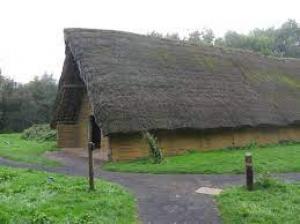Last night's talk by Professor Peter Rowley-Conwy was a fascinating look at the sophisticated farming techniques used by Neolithic farmers. Our understanding of these early dwellers on the land has developed over the years from a rather dismissive "primitive" judgement to a better appreciation of their skills and resilience. New archaeological methods such as carbon dating, DNA and isotope analysis have provided new and detailed evidence of their diet and of the genetic makeup of this population and their animals.
After the last ice age, Britain was initially inhabited by hunter-gatherers. They followed the herds of wild deer in their northerly migration each year, also hunting the massive aurochs cattle and wild boar as well as smaller animals, birds and fish.
They were rapidly replaced by a new kind of immigrant, the farming communities of the Neolithic. Bringing with them new strains of domesticated cattle, sheep and pigs, they established small-scale communities in woodland clearings. They ploughed using the ard, a wooden surface plough, crossing and recrossing the earth to break up the soil and grub up the weeds. They enriched the soil with manure from their cattle. Then they planted grains, mostly emmer wheat and barley. They coppiced hazel so that they could use the thin, flexible stems for weaving fish traps. They learned how to extend the calving season so that there would be a supply of milk over a long part of the year and they made the surplus into cheese. They traded their cattle to avoid inbreeding.
They met and feasted, raising large buildings like the one at Balbridie or creating causewayed enclosures. It was a hard and precarious existence but clearly there were times of plenty when families could get together with the local community (including it seems, their hunter-gatherer neighbours) and celebrate.
Thank-you, Peter, for a very entertaining and educational talk. |
